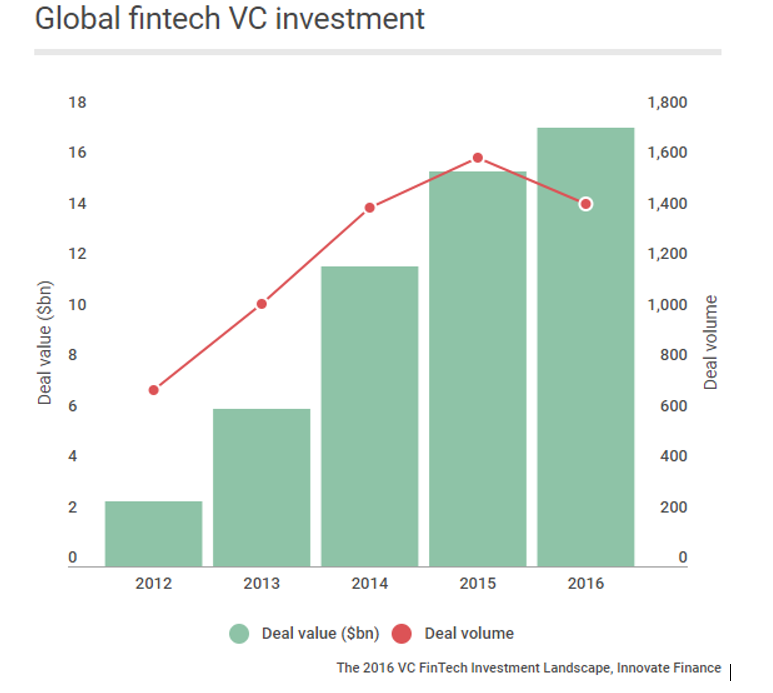Today, there are a slew of fresh, young financial technology firms – or FinTechs for short - that are leveraging technology, the Internet and smartphone apps to address inefficiencies across the spectrum of financial services. These FinTechs are well-financed by venture capitalists, private equity firms and forward-looking FIs (financial institutions) who see the enormous profit potential of innovation and disruption in the financial sector, and want a slice of it. So, should financial institutions feel threatened by FinTechs and ward them off as competitors? No! Quite the contrary! And, here are three reasons why banks and credit unions should value this new wave of innovation and partner with FinTechs to improve their financial offerings and remain competitive.

Banks – Strong Early Adopters and Supporters of Technology
Despite its reputation for stodginess, the banking industry has been a strong early adopter and supporter of technology and tech innovations, and has benefited greatly from the cost-savings, speed and efficiencies made possible by technology. However, banks and credit unions began to experience competition through technology around 1996 when NetBank debuted as the first Internet-only bank. Subsequently, other FIs adopted this offering, because by the year 2000, 80 percent of all U.S. banks and credit unions co-opted that innovation and successfully offered their own online banking versions.
Seven years later, in 2007, Apple changed everything by encouraging developers to create apps for the first iPhone. And today, 20 years after NetBank and 10 years after the first iPhone, FinTechs are again disrupting the financial sector through Robo Advisors, online lending, student loans, mobile payments, personal finance and budgeting, insurance, and more.
Rather than get defensive, traditional FIs should join the FinTech party. Here’s why:
#1. Adapting to the digital age is absolutely essential
Today, banks and credit unions face the demographic tsunami of tech-savvy Gen-Xers, millennials and born-with-an-iPad Gen-Zers who love the convenience and lower cost of everything digital. and are equally disdainful of the inefficiencies embedded in pre-digital business models.
FIs need to adapt to this next demographic wave of customers that demand digital convenience, balk at paying excessive fees, and easily shift loyalties. To succeed in this new reality and not end-up in the junk heap with Blockbuster Video, Tower Records or Big-Box retailers, FIs must fundamentally reposition their mindset from that of a service company to viewing themselves as a technology company - with services front-ending a technology-driven business model.
#2. Trading strengths will be mutually beneficial
FinTechs are rooted in Silicon Valley, Seattle, New York and other major hubs of tech innovation, digital marketing and finance; have deep funding for R&D and customer acquisition without the pressure of being profitable; and are laser-focused on solving single-point problems such as lower cost loans, insurance and wealth management. These luxuries are simply not available to most banks and credit unions, which struggle with lower revenue and paper-thin profit margins. So competing head-to-head with multiple FinTechs (to cover the broad spectrum of competition that banks face) is simply not an option, especially for smaller banks and credit unions.
On the flip side, FinTechs know that traditional FIs are the only ones that can offer the complete suite of financial services with full regulatory, compliance and physical infrastructure, while FinTechs only offer unregulated point solutions. Moreover, banks and credit unions are still firmly in-charge of customers with a strong customer base, brand awareness and market share. Consumers cannot and do not want to cut all ties with FIs and rely solely on the FinTech ecosystem for their financial needs.
As a result, the only real option – for FIs and for FinTechs - is to trade strengths for mutual gain. There are obvious advantages of shaking hands, and banks and credit unions must consider mutual profitable partnerships with FinTechs.
#3. Co-opting FinTechs will increase stickiness
FIs who wholeheartedly commit to partnering with FinTechs and jointly enhancing the customer’s banking experience, will further integrate customers into their brand and banking platform, giving them little reason to move to competitors.
For example, a FinTech called Geezeo offers Personal Financial Management (PFM) solutions that aggregate data from customer accounts at multiple FIs (such as your bank, brokerage, retirement fund and auto loan processor) and let customers graphically view all aspects of their financial life such as transaction categories, spending trends, investment performance, etc. This engagement supports a bank’s or credit union’s brand positioning as a tech enabler and creates a sticky environment that attracts and retains customers.
Geezeo has partnered with about 17,000 FIs and has been endorsed by the American Bankers Association, and is a prime example of the mutual benefits that accrue from partnerships between traditional FIs and FinTechs.
To thrive in the digital economy, FIs must see themselves as technology companies and enter into deep strategic, innovation and investment partnerships with FinTechs, or risk ending up in the gray zone of has-beens.
Sources:
https://books.google.com/books?id=WMO-DAAAQBAJ&printsec=frontcover#v=onepage&q&f=false
https://www.gobankingrates.com/banking/history-online-banking/
https://www.goodcall.com/personal-finance/fintech/
https://www.banknews.com/blog/fintech-workshop-offers-insights-and-strategies-for-community-banks/
http://cdn2.hubspot.net/hub/310641/file-1445626583-pdf/Rise_of_Fintech_in_Finance/Fintech_DEF.pdf
https://assets.kpmg.com/content/dam/kpmg/xx/pdf/2017/04/pulse-of-fintech-q1.pdf
http://www.tearsheet.co/funding/the-state-of-fintech-funding-in-five-charts
https://www.banknews.com/blog/fintechs-and-beyond/
https://bankingjournal.aba.com/2017/09/the-top-fintech-trends-driving-the-next-decade/
